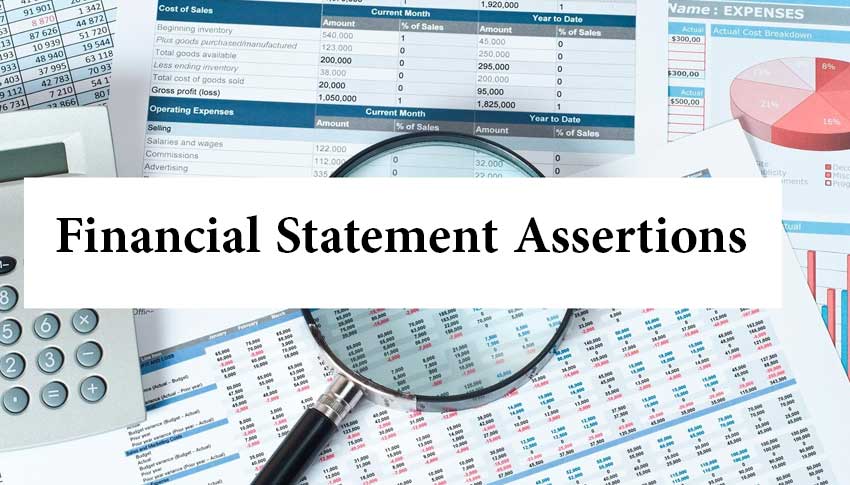Table of Contents
The assertions of the financial statements or “management statements” in the financial statements, in some countries called the accountant’s opinion, are a formal summary of qualitative nature, about the processes of registration, recognition, classification and presentation of the accounting information provided. by the financial statements.
When a company seeks financial support for its expansion or consolidation projects, it is very likely to rely on potential creditors or investors. The formality of the application process may require that the financial statements have the audit of an independent external accountant.
The external accountant will review the financial statements and issue an audit based on the assertions in the financial statements.
In other words, during an audit process, the company’s board of directors or the area responsible for preparing the accounting information, declares to the auditors that the financial statements are fully compliant with generally accepted accounting principles (GAAP) through of the ” assertions of the administration.”
We present the types of assertions in the financial statements and their relevance.
Assertions of the Financial Statements, importance
The assertions of the financial statements play an important role in the review of accounting and financial controls. They take for granted a series of rules that members of the finance and accounting team must comply with when performing their functions.
The presentation and disclosure of the assurances help the heads of the departments to present financial information in accordance with the standards and practices determined by the Financial Accounting Standards Board. These rules meet the requirements of the Securities and Exchange Commission (SEC).
The scope of the assertions involves the recognition, registration, measurement and presentation of all asset accounts, debts, shareholders’ equity, income and expenses according to the framework of the GAAP and the IFRS (ISFR International Standards of Financial Information).
For example, when an accountant presents a “machinery and equipment” item in the balance sheet of a company for the net value of USD 5 million, the auditor based on the management assertions assumes that:
- The machinery and equipment reported in the balance sheet exist and are under the ownership of the company.
- The machinery has been evaluated with precision according to standard procedures and under generally accepted methodologies.
- Machinery and equipment depreciate in correlative terms to their useful life and use.
- The company is in full possession and use of that machinery and equipment.
- All machinery and equipment under the possession and use of the company is included in the net value reported.
Assertions in the Financial Statements, Types
The assertions of management attested by those responsible for underwriting financial statements include statements of:
- Existence or occurrence
- Integrity or totality
- Rights and obligations
- Accuracy and valuation
- Presentation and disclosure
Let’s see a little about what each of them consists of.
Existence or Occurrence
The existence or occurrence helps the company to ensure that all transactions of a financial statement are carried out and each item has an existence, duly supported in property documents, records, invoices and receipts.
Integrity or totality
Integrity as a management statement indicates that the board of directors and the subscriber area of the accounting information attest that the financial statements are exhaustive and that all transactions are included in the financial reports for a specific accounting period.
For example, senior managers can assert that the balance sheet includes all assets, duties and capital accounts at the end of the month or quarter.
Rights and obligations
The assertion of rights and obligations ensures that the assets listed on the balance sheet are the property of the company and are entirely under its control.
This assertion also helps the company confirm that the debt accounts are accurate.
Accuracy, assessment and Assignment
The figures presented in the financial statements are accurate and presented under an adequate and reasoned valuation.
Valuation and allocation refers to asset depreciation procedures. In accounting language, depreciating a good means spreading its cost over several years. There are several types of depreciation methods among them, straight and accelerated line.
Presentation and disclosure
It is the last management assertion. It assumes that all the information presented is reflected in a balanced and clear way, facilitating the understanding and with sufficient disclosure detail.
